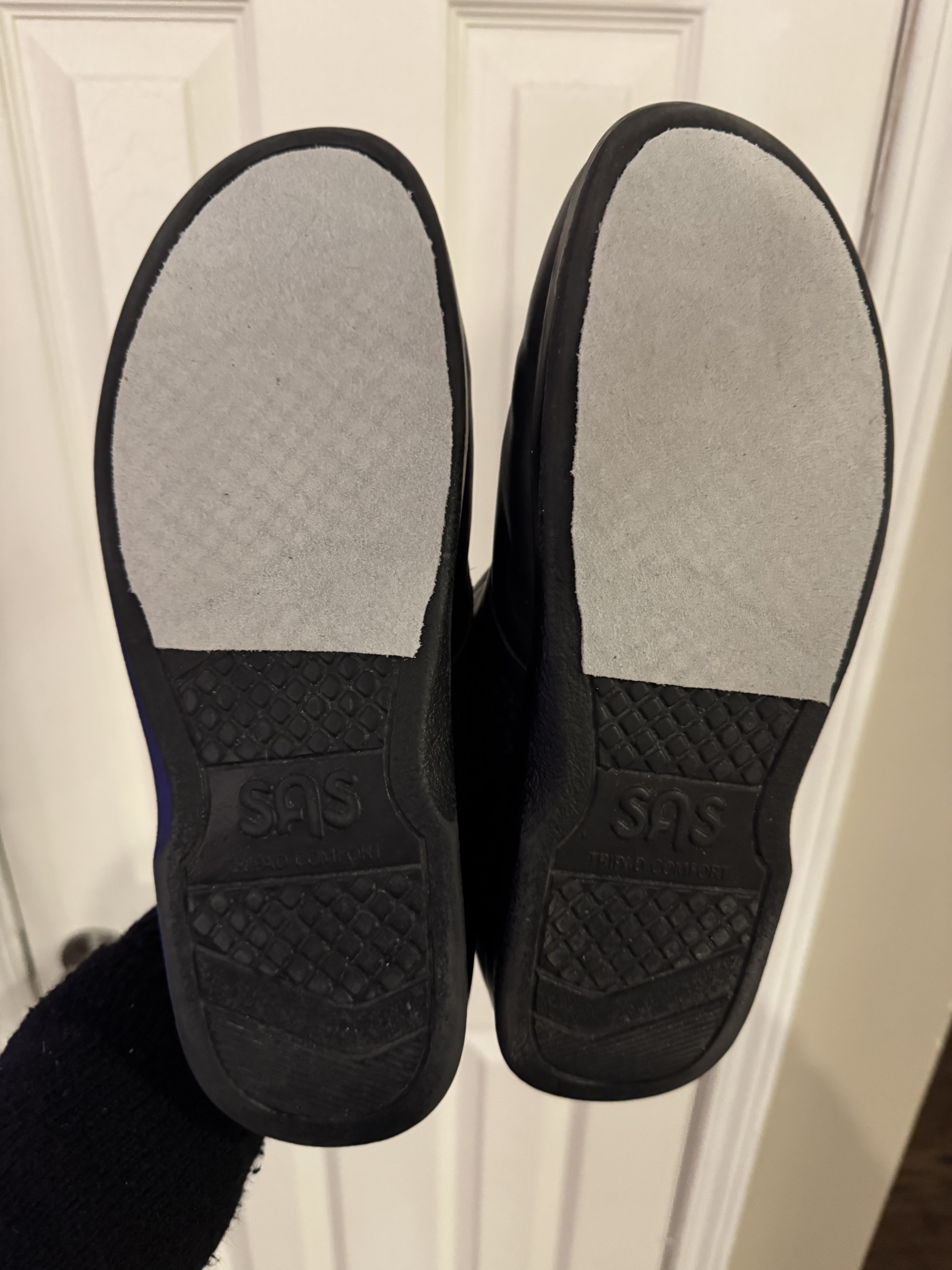Sueding Shoes

Last night, as I packed for this weekend’s trip to LindyFest, I decided to suede my dance shoes. Suede is faster, i.e. more slippery, than rubber soles, but not as fast as leather. It felt like a big decision. I was nervous that there would be so much to think about during a weekend conference, that adding another variable would be a bad idea, but I went ahead and did it.
A week ago, I ordered an A6 sized sheet of self-adhesive suede from Sole-2-Dance. When it came, I measured my shoe on the sheet. I found that only one entire sole fit, so I Prime-panic-ordered another (I am cancelling my Prime in April, so that will should be my last Prime-Panic-order). In the end, that second order wasn’t necessary for two reasons. Firstly, I realized that, if they were oriented perfectly, I could just barely fit both of my size 12 shoes on the sheet. Secondly, I decided to suede only the front half of my shoes.
I chose to not seude the entire shoe because I wanted to maintain some control. I do love the aesthetic of dancers, like Alex McCormack or Nathan Bugh, whose feet look like they are gliding across ice. I have personally experienced a few social dances where sliding fit so well to the music. But I also like to feel stabile while lindyhopping. The swingout is a good example of where I find a nice balance of slide and grip to be useful. The slide helps facilitates the directional movement before and after the face-off. The traction anchors the face-off, and helps the lead plant enough weight to facilitate the follow’s directional change.
Chroming the ball of the fool also makes spinning and pivoting much easier. I have recently struggled with spins. A big part of that is I’ve been dancing in rubber soles for the last half-year.
My previous dance shoes were a pair of all-white hightop Fuegos. I liked those shoes a lot. I remember thinking, two or so years ago, how the Fuego’s decreased traction fundamentally changed the dance for me. It affected so much, from the way I distributed my weight to how I created that all-important stretchiness with my partner. I danced a lot of hours in those Fuegos.
I didn’t buy new ones for a few reasons. Firstly, they were too hot. The white Feugos are made of synthetic fabric, which doesn’t breathe. Although leather car seats burn your ass, leather shoes are cool. I would guess the lowtop Feugos are cooler. The jade green ones are made out of a different material, I think, but I haven’t heard whether or not they breathe better.
Heat was a secondary factor. The most important reason was that I have problematic feet that require some intense orthotics. I visited an pedorthist, who recommended well-built shoes with a rectangular-shaped sole. I went with a brand I’ve never worn before: San Antonio Styles. I chose a dressy-ish, black walking shoe called Free Time. The shoes are relatively expensive, but each component is built separately. The sole is sturdy. That played a factor in my decision to suede them, because in the back of my mind, I thought that even if I screwed up the sole, a good cobbler would be able to fix them. Cheap shoes would be toast. Additionally, the insteps are removable, and big enough to easily house orthotics. The shoes as a whole are heavier than I would like, but they’ve worked well so far at social dances, even with the rubber soles.
The soles themselves are flat, as is expected with a walking shoe. This made chroming easy. I followed instructions here. I cleaned my shoes with water and a rag, then let them dry. I traced the outlines of the top half of each shoe using the back of a butterknife, a trick I learned from origami crease-patterns. I cut the shape an 1/8th of an inch smaller than the trace-line, so that the edges wouldn’t stick out. Then I carefully removed the adhesive, stuck it on the soles, and walked around my apartment a bit to press out any pockets of air. The process was easy, and the suede seems to have stuck well to the surface.
We’ll see how they work this weekend and how long they last.